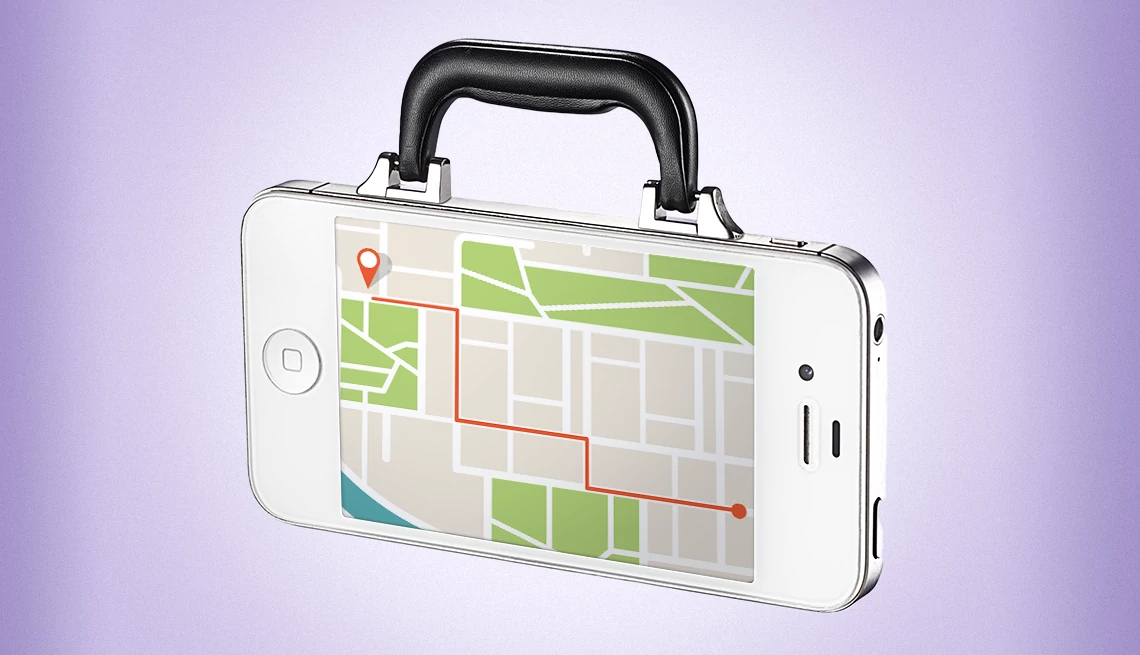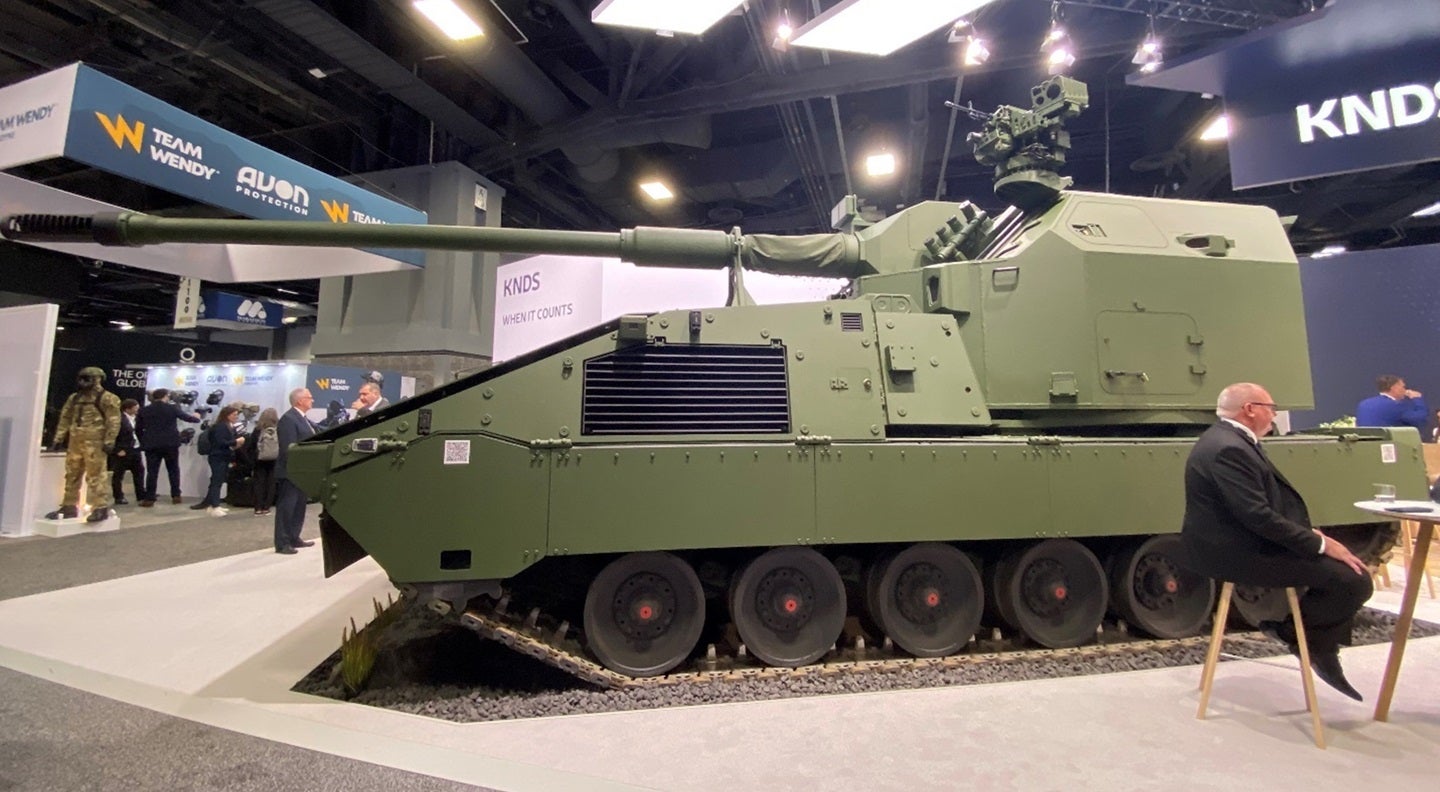

The relevance of armoured ground vehicles showed no sign of waning at the AUSA 2025 exhibition in Washington DC last week.
Peppered across the two show floors, numerous armoured vehicles were on display. It appears that new trends in the global military ground vehicle sector have sprouted from the new threat landscape, saturated with uncrewed aerial systems (UAS).

Discover B2B Marketing That Performs
Combine business intelligence and editorial excellence to reach engaged professionals across 36 leading media platforms.
Find out more
Lighter and more manoeuvrable vehicles are needed to distribute layered protection to tactical units which represents a major shift in doctrine.
GDLS Pandur SHORAD
Geoff Norman, director for US strategy and growth at General Dynamics Land Systems (GDLS), touched on this doctrinal shift in more detail in an interview with Army Technology at their stand.
In discussing the new developments on display at GDLS, he suggested they hinge on a new Army concept known as formation-based layered protection. GDLS, he maintained, is striving to meet this particular capability gap:

“Rather than having a single vehicle that does it all, or rather than trying to develop a solution that can be installed on every single vehicle, we’re working with the Army and with other industry partners to come up with solutions to protect the formation by having different capabilities on different vehicles and having networks and connections that allow sensors on vehicles to share information with one another, effectors on different vehicles to protect one another, to provide that formation-based layered protection.”
To begin with, the American defence prime displayed its European-built Pandur 6×6 wheeled vehicle front and centre, which no doubt drew second glances throughout the exhibition in Washington as this platform is in service with several global users, mostly in Europe.
However, this particular Pandur short range air defence (SHORAD) vehicle is mounted with the Sergeant Stout weapon station, a turret typically found on the US Army 8×8 Stryker combat vehicle.
The enduring weapon station includes a 30mm Bushmaster chain gun, a 7.62mm M240 gun, capacity for four Stinger and two Hellfire missiles.
This integration with a smaller, lighter, and more manoeuvrable vehicle “is a better application for some customers,” Norman said. “We’re orienting that vehicle on international opportunities, but wanted to show it here [in Washington] in case there was [US] Army interest as well.”
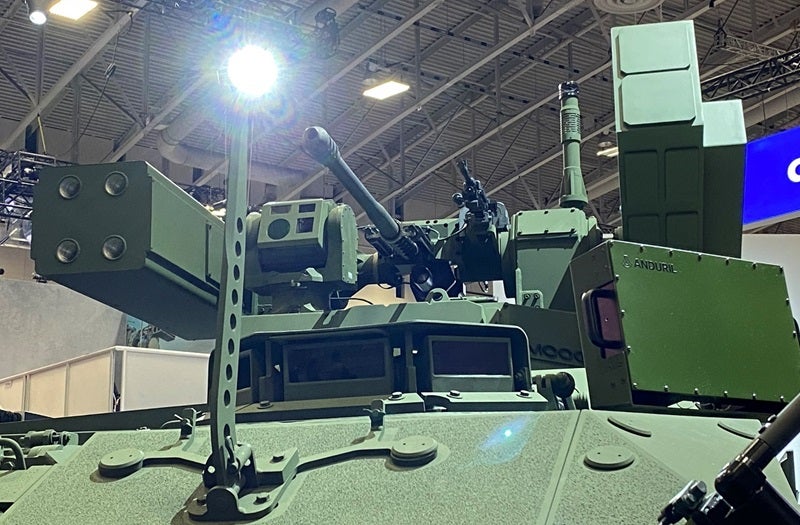
This may well be the case given the new trend in force structure to distribute SHORAD capabilities to the tactical level.
This doctrinal shift responds to Russian tactics playing out in Ukraine, in which the aggressor fires missiles and drones in combined salvos to demoralise and cause indiscriminate damage to Ukraine’s military assets, civilian population, and critical energy infrastructure.
However, sensors are needed too for manouevre protection which is why GDLS has partnered with Anduril to integrate its Spark radar, a system that detects both air and ground threats with range, speed, and fidelity. It uses Anduril’s Lattice software to pass threats on to other radars and command nodes, ensuring formation based protection.
While the partnership is only currently limited to the armoured vehicle sector, Anduril aims to bring the capability to command posts, missile launchers, and fires elements in the future.
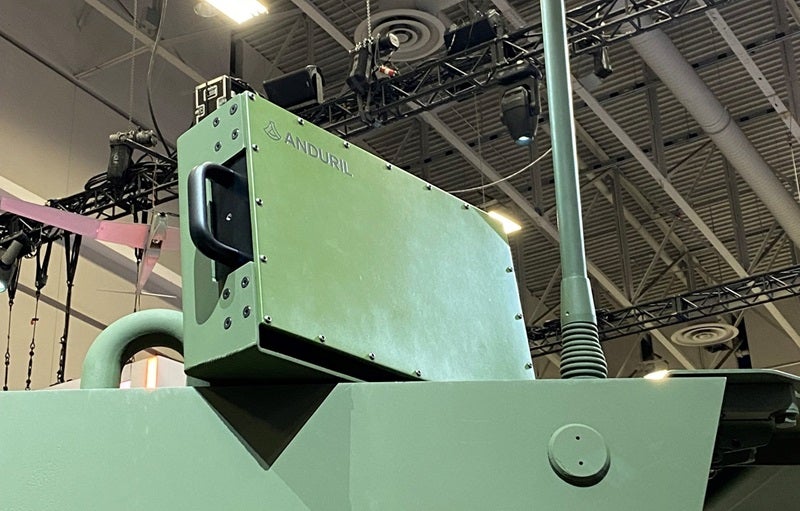
Tracked RCH 155
It did not go unnoticed that KNDS, the Franco-German manufacturer of the 155mm Remote Controlled Howitzer (RCH), which is typically mounted on a wheeled platform, chose to display its turret on a tracked vehicle – for the first time – in the United States.
The chief selling point of the armament is that it can fire eight round per minute on the move.
With orders from the UK and Germany announced last year, even supplanting Hanwha’s K9 howitzer to some surprise and despite the Korean group’s protests, it appears KNDS may propose RCH to the US Army.
But the contest with Hanwha seems to be dissipating slightly, at least in the US market, as the Korean company told this reporter that the US Army will soon test its new K9 Mobile Howitzer variant in the form of a wheeled vehicle in the first quarter of 2026.
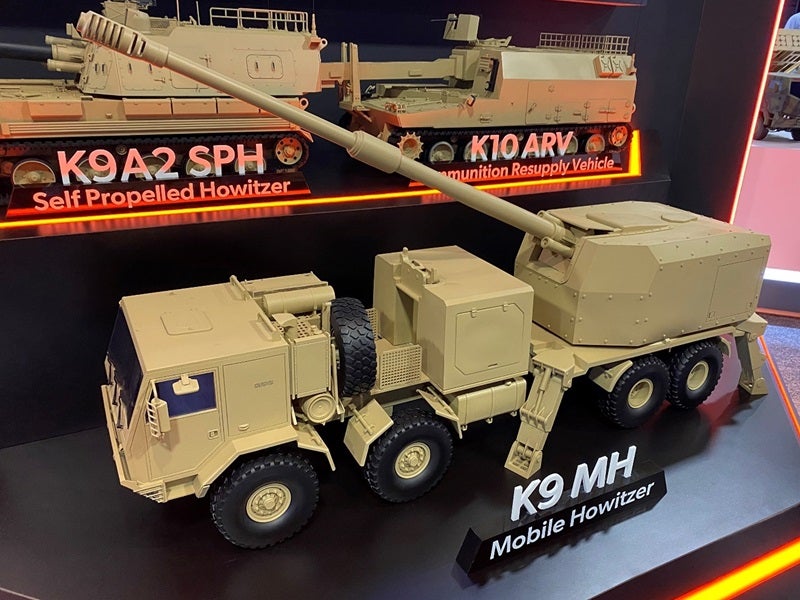
Meanwhile, KNDS tested the tracked RCH in a trial about two months ago. The decision to provide a tracked vehicle is intended to operate in the harsher terrain of Nato’s eastern flank, a programme officer told Army Technology on the show floor on 14 October.
In Europe, the Panzerhaubitze 2000 is the likely standard platform for RCH but the spokesperson continued to note that the Stryker combat vehicle would be the American baseline.

Besides RCH, European industry are also hoping that the US Army would be receptive to another artillery capability in the CAESAR self-propelled howitzer. KNDS and Leonardo DRS announced a new partnership to present the CAESAR to the Army at the opening of the AUSA exhibition on 13 October.
“The lessons learned in three years of combat in Ukraine – where 120 CAESAR are now deployed – give us… [a] position to offer the United States Army a… weapon which can be integrated on a US tactical truck,” suggested Olivier Travert, marketing and sales director for KNDS France.
American mobility, foreign effects
To this end, various American tactical trucks from several US suppliers were peppered across the show floor, serving as common ground vehicles carrying numerous counter-drone (C-UAS) effects from various international suppliers.
This trend comes after drones were launched, it is said by Russian forces, into Central and Western European airspace throughout September.
To meet the growing threat, short range air defence capabilities are being distributed to tactical level units. Expert analysis from the Council on Geostrategy suggests that air defence is an all-hands job now; this specialty is no longer the remit of a few select regiments.
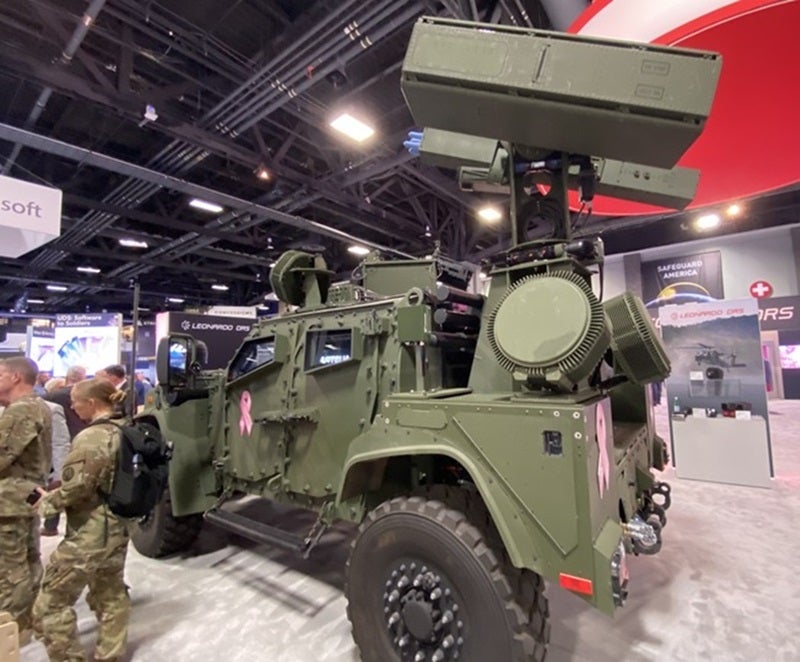
Leonardo DRS presented its own effects from an Oshkosh JLTV A1. Other featured vehicles include GM Defense’s utility Infantry Squad Vehicle (ISV) on which Rafael USA mounted its Spike Near-Line-Of-Sight launcher while the ISV cargo variant was used to carry sensors on the Rheinmetall stand.
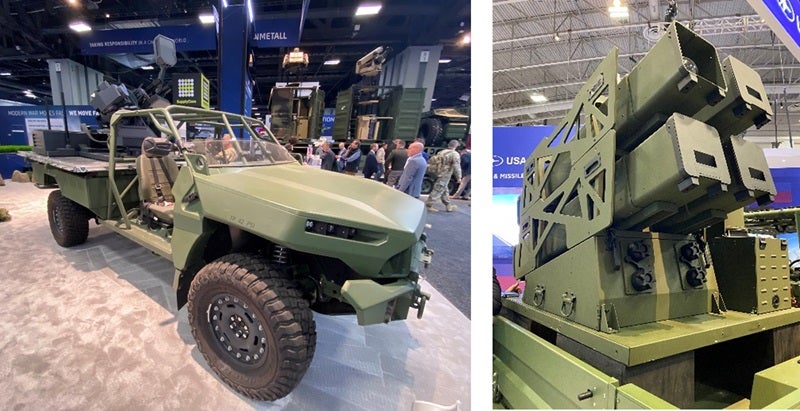
DeepFires autonomous launcher
Industrial cooperation goes beyond the C-UAS sector too as Raytheon, Oshkosh, and Forterra jointly developed the new DeepFires autonomous launcher, showcased for the very first time at AUSA this year.
The weapon system is an optionally autonomous and modular launcher used for both offensive and defensive fires – the system supports various munitions from an AIM-9X to the larger Tomahawk missiles. The launcher is mounted on an Oshkosh FMTV A2.
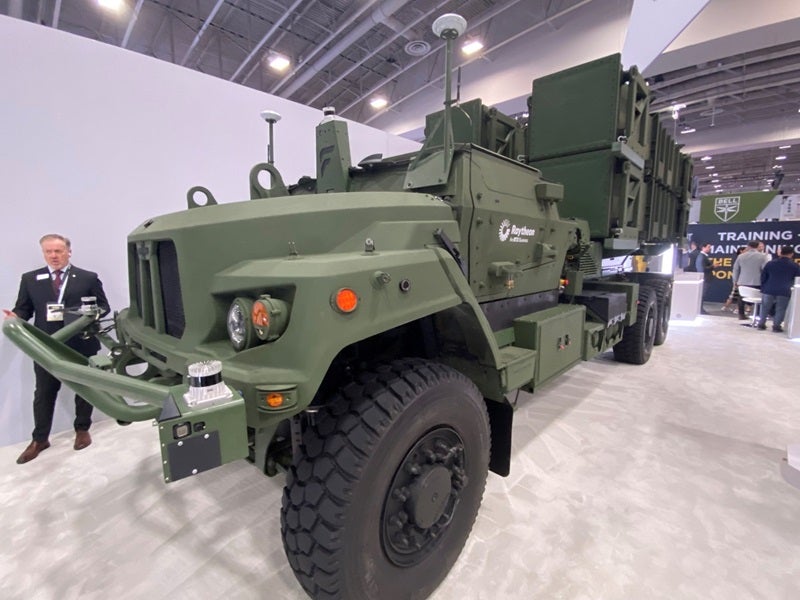
Brian Burton, vice president, precision fires and maneuver sub-strategic business at Raytheon, for precision fires and manoeuvre, introduced the new mobile weapon system to Army Technology alongside his industrial counterparts from vehicle specialist Oshkosh and autonomy provider Forterra.
The team emphasised that this programme will focus on deep fires, mobility, and air transportability.
Currently the US Army Rapid Capabilities and Critical Technologies Office aim to create optionally crewed, air-transportable fire support systems to augment or replace existing launchers under the Common Autonomous Multi Domain Launcher (CAML) initiative. This includes options for heavy and medium variants.
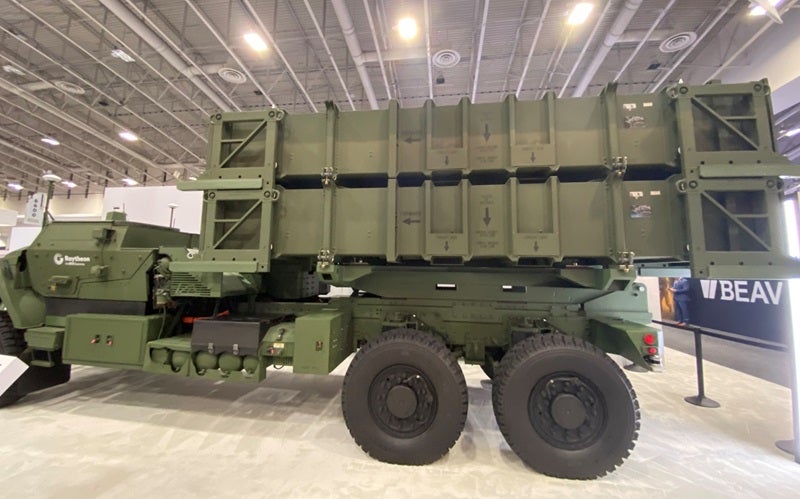
It appears that DeepFires fulfils a lot of the criteria set out under CAML, although none of the industrial partners would provide confirmation to that end, other than to say that the DeepFires capabilities would be “leveraged” as RTX track and pursue the Army programme.
During the briefing, Burton continually relayed their flexibility in scaling the platform:
“We can scale and working with with Oshkosh and with Forterra to bring [the platform] to a larger, heavier vehicle, if that’s what the demand and the needs are for the Army,” he stated.
“It has such diversity as a platform… Maybe the payloads change over time. But also if we need to go to a different platform, we just work across our portfolio to come and get the right answer.”
link




